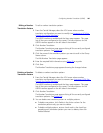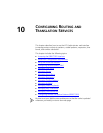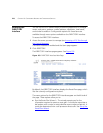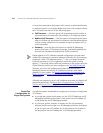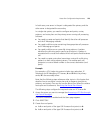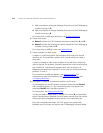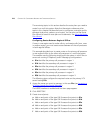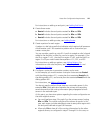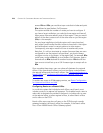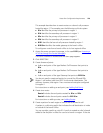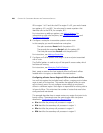
Route Plan Configuration Requirements 273
In both cases, one server in the pair is designated the primary and the
other server is designated the secondary.
In a single-site system, you need to configure end points, routes,
patterns, and route plans on the primary server running call processing
software.
■ You need to create end points that identify the other call processor
and the IP Messaging modules.
■ You need to define routes containing the appropriate call processor
and IP Messaging end points.
■ You need to define one or more dial string patterns. A pattern
identifies the dial string prefix used by an end point. A pattern is
associated with a route and indicates which end point should receive a
call.
■ You need to create route plans (associate a route with a dial string
pattern) on both call processing servers. This enables each call
processor to route a dialed number to the correct destination (end
point).
Example
For example, a VCX single-site system includes two redundant, IP
Telephony and IP Messaging VCX servers, A and B. A is the primary
server, B is the secondary server.
Note that the following steps reference other topics in this chapter that
describe how to configure a route plan and its elements (end points,
patterns, and routes). You can also use the Route Plan Wizard to create a
route plan and its elements. See Using the Route Plan Wizard
.
The following steps configure the required routes on VCX server A.
1 Access the server you want to manage (see A
ccessing a VCX Site through
the Central Manager).
The USERS interface is enabled and the Users page appears.
2 Click DIRECTORY.
3 Create four end points.
a Add an end point of the type Call Processor that points to A.
b Add an end point of the type Call Processor that points to B.





